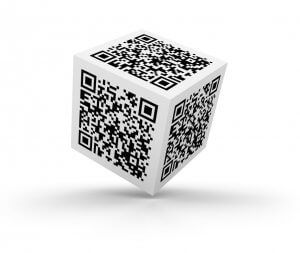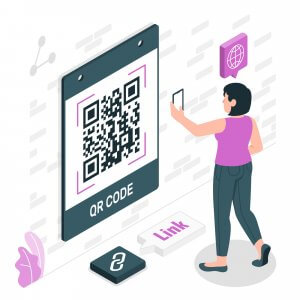Merchandising Magic
Creative Presents That Leave a Lasting Impression

In a world where first impressions matter, the right merchandising can make the difference between a fleeting moment and an unforgettable experience. By skillfully selecting and presenting products, you can not only increase sales in your retail store, but also win the loyalty of your customers. Discover how you can transform your customers experience with innovative merchandising strategies.
1. Introduction: The Power of Memorable Merchandising
Creative merchandising is a powerful tool that can elevate the gifting experience for your customers. When you offer unique products that resonate with their needs, you not only enhance your brand’s visibility but also foster deeper connections. By understanding the diverse preferences of your audience, you can curate items that reflect their interests, making them feel valued and appreciated. This personal touch can significantly impact customer loyalty and retention, especially for those starting their careers or graduating. Thoughtful merchandise serves as a reminder of your brand’s commitment to quality and innovation, positioning you as a leader in the retail market. As you explore various marketing strategies, consider how customised products can enhance your business profile and set you apart from competitors. Remember, each item you provide is not just a product; it’s an opportunity to create memorable experiences that leave a lasting impression on your customers. Embrace this chance to transform ordinary transactions into extraordinary moments.
2. Understanding Merchandising and Its Impact on Gifting
Merchandising plays a pivotal role in shaping the gifting experience, particularly in a business environment. When you carefully select merchandise that resonates with your customers, you elevate their perception of your brand. This thoughtful approach not only makes your products memorable but also enhances customer loyalty. Recent graduates entering the workforce can leverage these skills in their careers by understanding how effective merchandising impacts sales and customer satisfaction. By identifying unique items that reflect your brand’s values, you can create an unforgettable experience for customers. This goes beyond mere product placement; it involves curating merchandise that tells a story and connects emotionally with the audience. Retailers who implement innovative merchandising strategies will find that customers are more likely to engage with their brand and share their experiences with others, ultimately leading to long-term success in the marketplace. Embrace this opportunity to transform ordinary gifts into extraordinary experiences that leave a lasting impression.
3. Creative Merchandising Ideas for Unique Presents

Create personalized promotional merchandise to boost your brand – Caps, mugs, pens, and more with custom branding from ADS Marketing.
Discovering inventive merchandising ideas can elevate gift-giving experiences and create unforgettable impressions. In the competitive landscape of retail, incorporating unique items into your marketing strategy not only attracts customers but also strengthens their connection to your brand. Consider personalised merchandise that reflects the interests of your customers; this tailored approach demonstrates genuine understanding and fosters loyalty. For graduates entering the workforce, gifting practical items that enhance their career journey can leave a lasting impact. Products such as high-quality stationery or branded tech accessories make excellent presents that combine functionality with thoughtfulness. By utilising creative merchandising strategies, your business can differentiate itself from competitors, driving both sales and customer satisfaction. Ultimately, the right selection of merchandise can transform the ordinary into the exceptional, ensuring your gifts resonate long after they are received. Engaging with consumers on this level not only enhances their experience but also establishes a foundation for enduring relationships in the marketplace.
4. How to Tailor Your Merchandising Choices to Your Audience
Understanding your audience is vital to crafting effective merchandising strategies that resonate. By identifying the preferences and interests of your customers, you can curate items that not only reflect your brand but also enhance their experience. Consider the aspirations of graduates entering the job market; thoughtful merchandise that aligns with their career ambitions can leave a memorable impression. By integrating marketing techniques that focus on the unique needs of various customer segments, you can significantly boost sales and foster loyalty. Selecting products that convey your business values while appealing to specific demographics transforms the retail experience into one that feels personal and engaging. This tailored approach not only strengthens the connection between your brand and its audience but also showcases your commitment to understanding their desires. When customers feel acknowledged through carefully chosen items, they are more likely to share their positive experiences, ultimately enriching your brand’s reputation and driving future success.
5. The Role of Branding in Effective Merchandising Gifts
Effective branding plays a pivotal role in the success of merchandising gifts, as it not only enhances product visibility but also fosters a deeper connection with customers. When you integrate your brand identity into merchandise, you create items that resonate with your audience and leave a lasting impression. Consider how promotional products can reflect your values and mission, making recipients feel valued and understood. This connection is particularly vital in today’s competitive landscape, where customers seek meaningful experiences rather than generic tokens. As businesses strive to differentiate themselves, utilising branded merchandise can transform ordinary gifts into powerful marketing tools. By carefully selecting products that align with your brand narrative, you not only elevate customer perception but also contribute to long-term loyalty. Graduates entering the workforce must recognise the significance of these skills in their careers, as effective branding in merchandising can make all the difference in sales outcomes and overall business success.
6. Innovative Merchandising Strategies for Lasting Impressions
Creative merchandising strategies can significantly enhance customer experience, making a lasting impression that goes beyond the point of sale. By thoughtfully selecting products that resonate with your audience, you can transform ordinary gifts into memorable tokens of appreciation. For businesses, this means understanding the preferences of your customers and identifying unique items that reflect their interests. Consider utilising merchandise that aligns with current trends or incorporates personalisation, which can elevate the perceived value of your offerings. Moreover, employing effective marketing techniques to promote these products ensures they catch the eye of potential clients. As you work towards building a strong brand presence, integrating innovative merchandising can not only drive sales but also foster long-term relationships with customers. Graduates entering the retail sector can leverage these skills to stand out in their careers, finding success by mastering the art of impactful gifting. Ultimately, the right merchandise choices can significantly influence how customers perceive your brand, leading to a more engaged and loyal clientele.
7. Conclusion: Embrace the Magic of Thoughtful Merchandising
Merchandising offers a unique opportunity to create memorable experiences that resonate with customers, leaving a lasting impression long after the purchase. By carefully selecting products that reflect your brand identity, you can enhance customer satisfaction and loyalty. For instance, consider incorporating innovative merchandise tailored to specific occasions, such as graduation gifts that celebrate achievements and milestones. These thoughtful items not only demonstrate an understanding of your customers’ needs but also showcase your commitment to their success, whether in business or personal pursuits. By employing strategic marketing techniques in your retail environment, you can elevate the overall shopping experience, turning casual buyers into repeat customers. Emphasising the quality and relevance of your products will ultimately foster a deeper connection with your audience, paving the way for fruitful long-term relationships. In this competitive landscape, honing your merchandising skills is vital to navigate the evolving market and meet the expectations of discerning customers.
Frequently asked questions
What do you mean by merchandising?
Merchandising refers to the strategic planning and execution of activities that promote the sale of products to consumers. It encompasses various practices aimed at enhancing the visibility and appeal of products within a retail environment, thereby influencing customer purchasing decisions. Effective merchandising involves the arrangement and presentation of goods to create an engaging shopping experience, utilising techniques such as visual displays, signage, and product placement. In addition to physical presentation, merchandising also includes the selection and pricing of products, ensuring that offerings align with customer preferences and market trends. This process often requires a deep understanding of the target audience, allowing businesses to tailor their merchandise to meet specific needs and desires. Furthermore, merchandising extends beyond retail settings to encompass broader marketing strategies, such as promotional campaigns and branding initiatives. By integrating these elements, companies can foster a strong connection with their customers, encouraging brand loyalty and repeat purchases. Ultimately, successful merchandising not only drives sales but also enhances the overall customer experience, positioning a brand as a preferred choice in a competitive marketplace.
What does a merchandiser do?
A merchandiser plays a crucial role in the retail and wholesale sectors, focusing on the promotion and sale of products. Their primary responsibility is to ensure that products are presented effectively to maximise sales potential. This involves analysing market trends and consumer behaviour to determine the most appealing product placements and displays. Merchandisers work closely with suppliers and retailers to select the right products for specific markets, based on factors such as seasonality, trends, and consumer preferences. They often conduct inventory assessments to ensure that stock levels are optimal, avoiding both overstock and stockouts. In addition to product selection, merchandisers design and implement visual displays that attract customers and enhance the shopping experience. This includes arranging products in a way that is aesthetically pleasing and easy to navigate. They may also be involved in promotional activities, such as sales campaigns and special events, to drive customer engagement. Furthermore, effective communication with sales teams and other departments is vital, as merchandisers need to relay insights and strategies that align with broader business objectives. Their ultimate goal is to increase sales and profitability while fostering a positive brand image.
What is an example of merchandising?
Merchandising involves various strategies aimed at promoting products to encourage sales, and one effective example is the use of visual merchandising in retail stores. This strategy focuses on the arrangement of products and the overall aesthetic of the store to attract customers and enhance their shopping experience. For instance, a clothing retailer may create an eye-catching display at the entrance featuring a seasonal collection. This display could include mannequins dressed in the latest fashion trends, complemented by themed decor that reflects the current season. The strategic placement of lighting can further highlight these items, drawing customers’ attention as they enter the store. Inside, the layout may guide customers through different sections, with complementary items grouped together to encourage additional purchases. For example, placing accessories near outfits can prompt customers to consider buying a complete look. Additionally, promotional signage may be used to communicate discounts or special offers, further incentivising purchases. Overall, effective merchandising not only showcases products attractively but also creates an engaging shopping environment that aligns with customer preferences, ultimately driving sales and fostering brand loyalty.
What is merchandising in accounting?
Merchandising in accounting refers to the activities and processes involved in buying and selling goods for profit. This encompasses a range of operations, including inventory management, sales tracking, and financial reporting related to the merchandise. Merchandising companies typically purchase finished goods from manufacturers or wholesalers and then sell them directly to consumers or other businesses. In terms of accounting, merchandising involves the recording of transactions related to inventory purchases, sales, and returns. The primary financial statements affected include the income statement and the balance sheet. On the income statement, revenues from sales are recorded, while the cost of goods sold (COGS) reflects the direct costs attributable to the merchandise sold. The difference between these figures gives the gross profit, a key indicator of a company’s profitability. Moreover, effective merchandising accounting requires rigorous inventory management practices to ensure accurate stock levels and valuation. This can involve periodic or perpetual inventory systems, which track inventory changes in real-time or at specific intervals. Overall, merchandising in accounting plays a crucial role in assessing a company’s financial health and operational efficiency, facilitating informed decision-making and strategic planning.








